Posts Tagged: blue
Katydid: She Did, She Didn't, and Then She Did
In the blink of an eye... There it was, nestled inside a baby blue eyes blossom, Nemophila menziesii, which is a spring-blooming plant native to California, Oregon and Baja California. "It?" A katydid nymph, a wingless critter with long black-and-white...
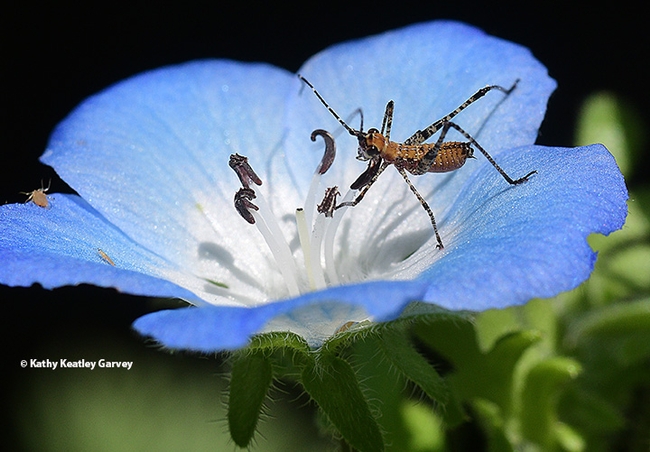
A katydid nymph nestled in a baby blue eyes blossom, Nemophila menziesii, in Vacaville, Calif. (Photo by Kathy Keatley Garvey)
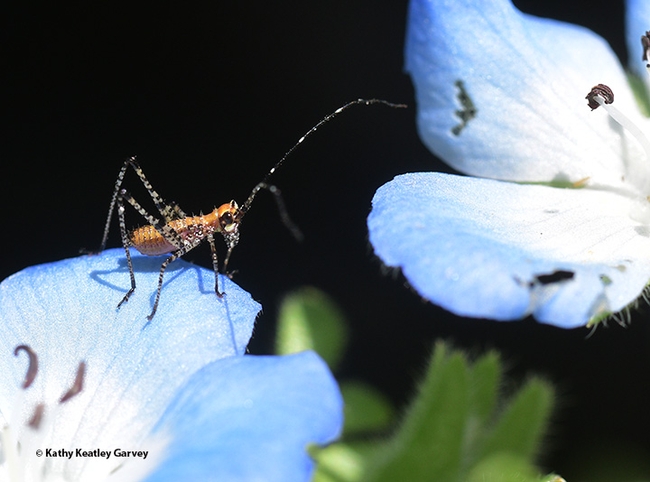
If the grass is greener on the other side, is a baby blues more blue on the other side? A katydid nymph gets ready to move. (Photo by Kathy Keatley Garvey)
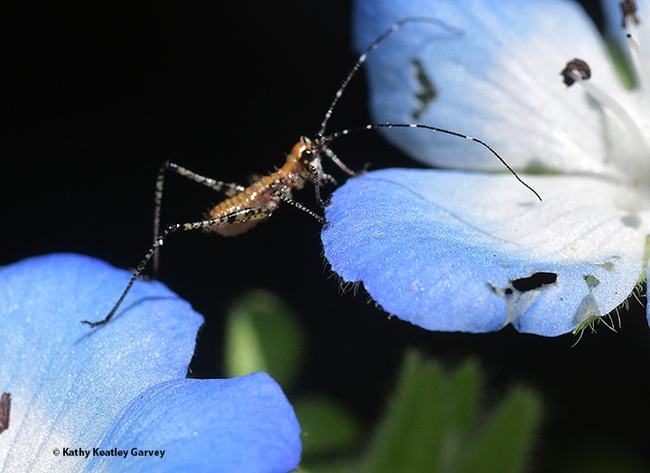
A long stretch, and the katydid nymph touches the next blossom. (Photo by Kathy Keatley Garvey)
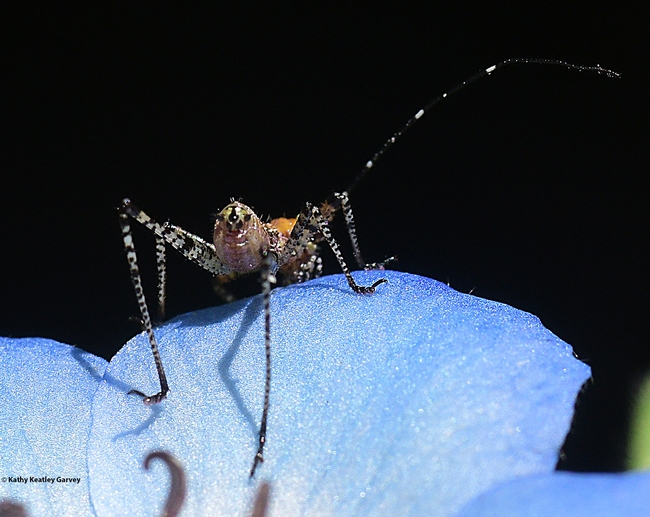
Up and over the baby blue eyes blossom, and the katydid nymph is gone. (Photo by Kathy Keatley Garvey)
European Wool Carder Bees: 'The End Is Near'
It's almost the end of the season for the European wool carder bee, Anthidium manicatum. A few still hang around the foxgloves, the catmint and the African blue basil in our pollinator garden. They really stand out when they're visiting the hot pink...
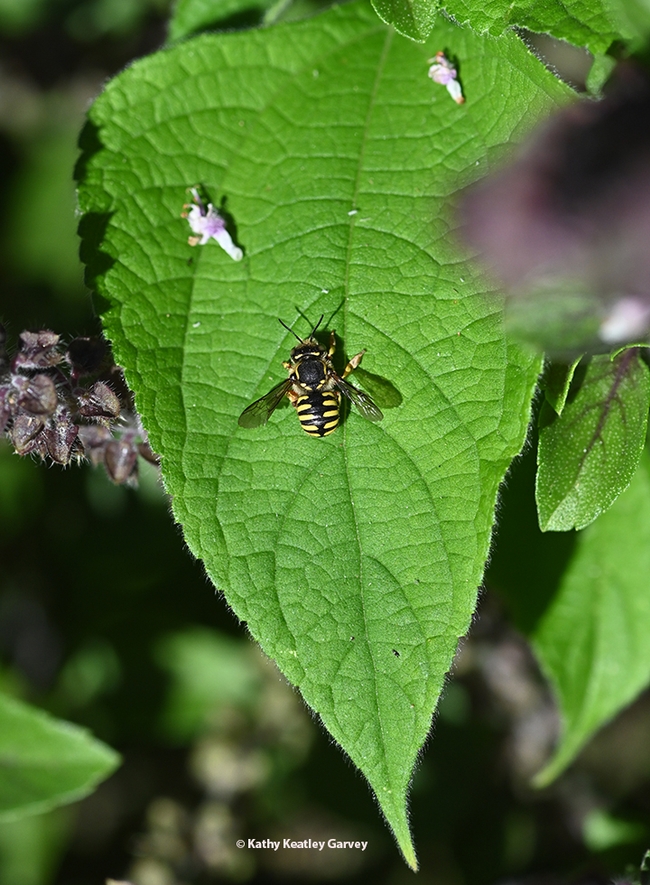
A male European wool carder bee, Anthidium manicatum, rests on an African blue basil leaf in the early morning. (Photo by Kathy Keatley Garvey)
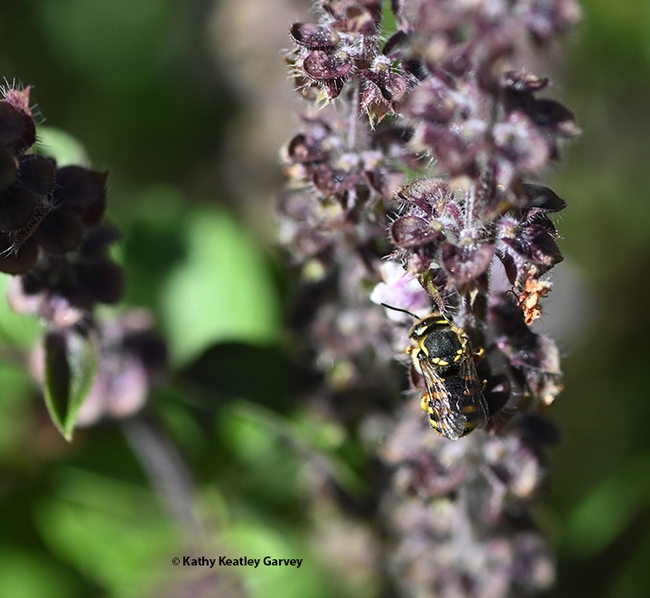
Find the European wool carder bee! It's difficult to see as it rests on an African blue basil bloom. (Photo by Kathy Keatley Garvey)
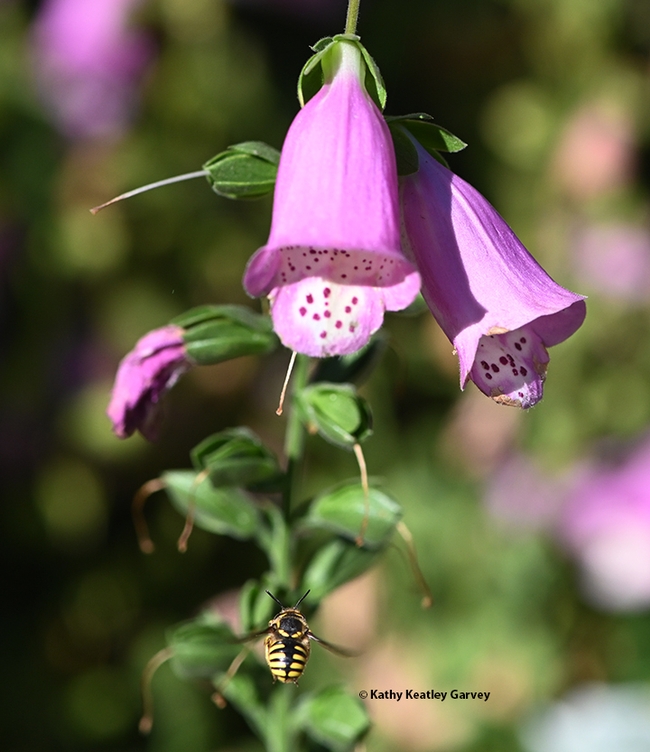
A European wool carder bee, a black and yellow streak, heads for a foxglove. (Photo by Kathy Keatley Garvey)
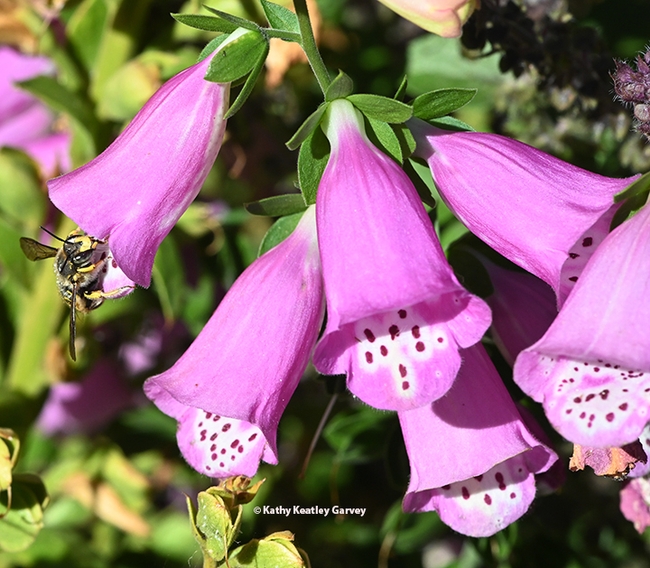
A European wool carder bee foraging in a foxglove blossom. Sometimes they sleep inside. (Photo by Kathy Keatley Garvey)
How to Find a Praying Mantis in the Wild
If you're trying to find a praying mantis in the wild, go where the food source is. Sounds pretty easy, right? But oh, they're camouflaged. They lie in wait, as ambush predators, and strike. Now you see the predator, now you don't. Where did it...
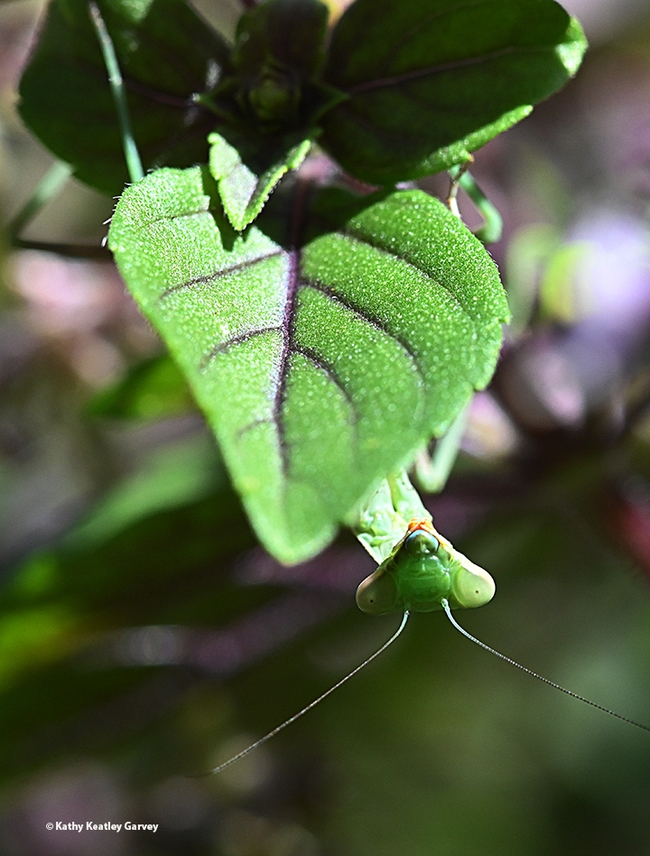
A praying mantis, a Stagmomantis limbata, hides beneath an African blue basil leaf in a Vacaville pollinator garden. (Photo by Kathy Keatley Garvey)
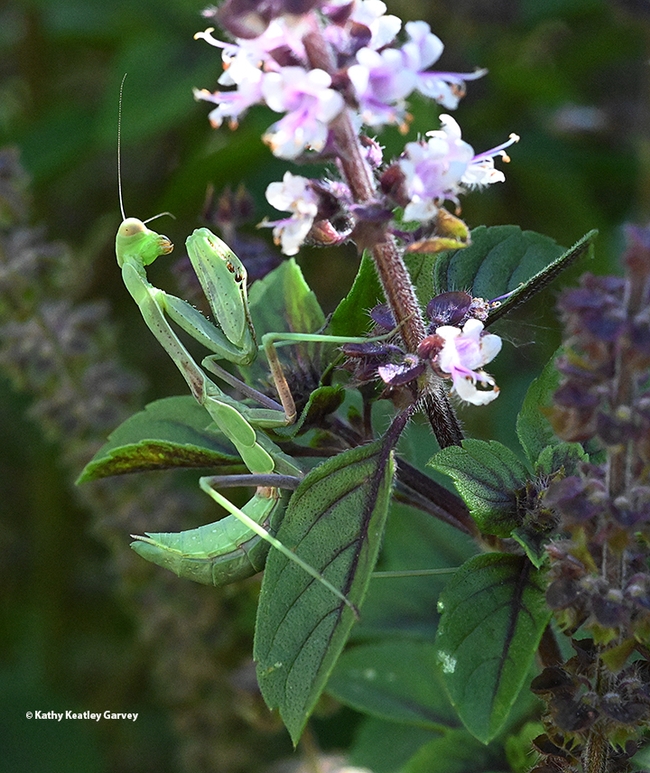
This praying mantis, a Stagmomantis limbata, hanging out in the African blue basil leaf, scouts for bees. (Photo by Kathy Keatley Garvey)
Green Legs and Bam!
Have you ever seen a green-legged praying mantis on a green leaf? Praying mantis expert Lohitashwa "Lohit" Garikipati, identified this species as a subadult male, Stagmomantis limbata, perched in a patch of African blue...
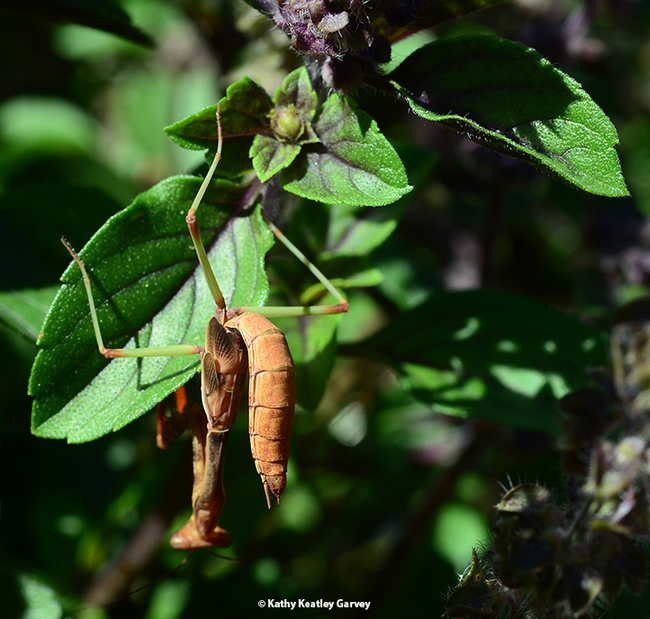
Green legs of this male praying mantis, Stagmomantis limbata, are camouflaged in this patch of African blue basil. (Photo by Kathy Keatley Garvey)
Find the Praying Mantis in the African Blue Basil
Honey bees absolutely love African blue basil. If there ever were a "bee magnet," this plant is it. We first learned of African blue basil, (Ocimum kilimandscharicum × basilicum 'Dark Opal'), through Gordon...
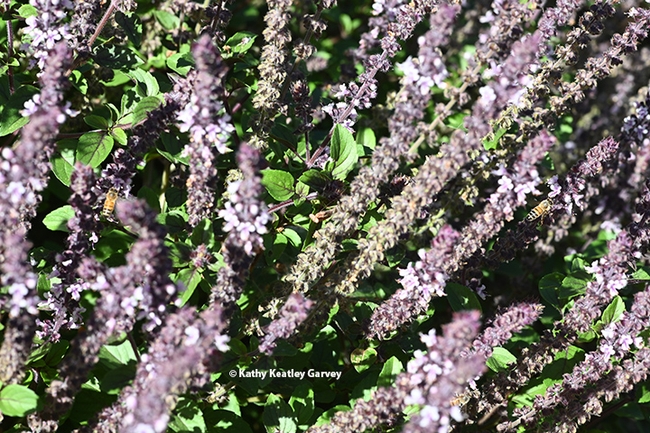
In this image, you can see two bees on the African blue basil. But can you find the praying mantis? (Photo by Kathy Keatley Garvey)
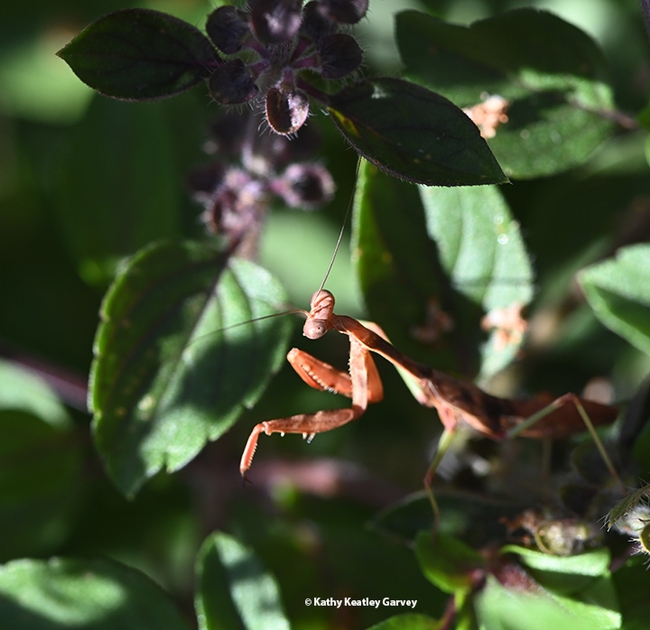
Oh, there you are, praying mantis! Enjoying a little sunshine, hmm? This one is a male subadult male Stagmomantis limbata, as identified by mantis expert Lohit Garikipati, a UC Davis alumnus now studying for his master's degree at Towson (Maryland) University. (Photo by Kathy Keatley Garvey)

